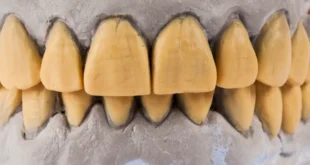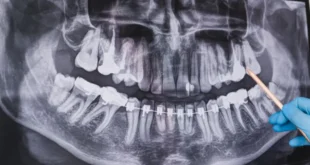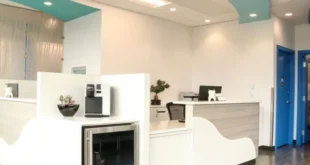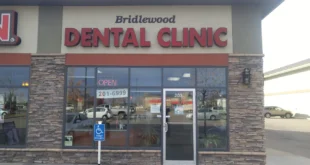What Are Veneers?
Porcelain veneers, also referred to as dental veneers, are ultra-thin shells crafted from medical-grade ceramic material designed to cover the front surface of teeth. These veneers are customized to match the natural color, size, and shape of the patient’s teeth, providing a seamless and natural-looking result. They serve as an effective solution for correcting various cosmetic imperfections, including discoloration, chips, cracks, gaps, and minor misalignments.
Types of Veneers
- Porcelain Veneers: These veneers are crafted from porcelain material, known for its durability, stain resistance, and ability to mimic the appearance of natural teeth seamlessly. Porcelain veneers are highly customizable and offer superior aesthetics, making them a preferred choice for long-lasting smile transformations.
- Composite Resin Veneers: Composite resin veneers are made from a tooth-colored composite material applied directly to the tooth’s surface and shaped to achieve the desired appearance. While they are more affordable than porcelain veneers and can be completed in a single dental visit, they may be more prone to staining and require replacement or repair more frequently.
Who Gets Veneers?
Veneers are suitable for individuals seeking to improve the overall appearance of their smile and address specific cosmetic concerns. Common candidates for veneers include those with:
- Discolored or stained teeth that do not respond to traditional whitening methods.
- Chipped, cracked, or worn-down teeth.
- Irregularly shaped or misaligned teeth.
- Small gaps or spaces between teeth.
Procedure Details
The process of obtaining porcelain veneers typically involves several steps:
- Consultation: The initial consultation with a dentist involves discussing the patient’s cosmetic goals, conducting a comprehensive dental examination, and determining if veneers are the appropriate treatment option.
- Preparation: To prepare the teeth for veneer placement, a small amount of enamel is removed from the tooth’s surface. This step ensures a proper fit for the veneers and allows for optimal bonding.
- Impressions: Impressions or digital scans of the prepared teeth are taken to create custom-made veneers tailored to the patient’s smile.
- Temporary Veneers: In some cases, temporary veneers may be placed to protect the teeth while the permanent veneers are being fabricated in a dental laboratory.
- Bonding: Once the final veneers are ready, they are bonded to the teeth using a strong dental adhesive. The dentist carefully positions each veneer to achieve the desired aesthetic outcome.
- Final Adjustments: After the veneers are bonded in place, the dentist may make final adjustments to ensure proper fit, bite alignment, and overall comfort.
Risks and Benefits
- Benefits: Porcelain veneers offer numerous benefits, including enhanced aesthetics, improved self-confidence, and long-term durability. They provide a natural-looking solution for addressing cosmetic imperfections and can significantly transform the appearance of the smile.
- Risks: While porcelain veneers are considered safe and effective, there are potential risks associated with the procedure. These may include tooth sensitivity, gum irritation, or damage to the veneers due to trauma or excessive force. Additionally, some individuals may experience dissatisfaction with the results if expectations are not met.
Recovery
Recovery after receiving porcelain veneers is typically minimal, with most patients able to resume their normal activities immediately following the procedure. However, it is essential to follow any post-operative instructions provided by the dentist to ensure optimal healing and long-term success of the veneers. Patients may experience slight sensitivity to hot or cold temperatures initially, but this typically subsides within a few days to a week.
Veneer Longevity and Aftercare
With proper care and maintenance, porcelain veneers can last for many years, often a decade or more. To prolong the longevity of veneers, patients should adhere to the following aftercare guidelines:
- Maintain good oral hygiene habits, including brushing and flossing regularly.
- Avoid chewing on hard objects or using teeth as tools to prevent damage to the veneers.
- Attend regular dental check-ups and cleanings to monitor the condition of the veneers and address any issues promptly.
- Consider wearing a mouthguard during sports or activities that pose a risk of dental injury.
Veneer Alternatives
While porcelain veneers offer an effective solution for many cosmetic concerns, several alternatives may be considered based on individual needs and preferences:
- Dental Bonding: Dental bonding involves applying a tooth-colored composite resin material directly to the tooth’s surface to correct minor imperfections such as chips, cracks, or discoloration.
- Orthodontic Treatment: For individuals with significant misalignments or spacing issues, orthodontic treatment such as braces or clear aligners may be recommended to straighten the teeth and improve overall alignment.
- Teeth Whitening: Professional teeth whitening treatments can effectively brighten and lighten the color of natural teeth, addressing stains and discoloration without the need for restorations like veneers.
In conclusion, porcelain veneers offer a versatile and effective solution for enhancing the appearance of teeth and achieving a beautiful smile. By understanding the process, benefits, and aftercare considerations associated with veneers, individuals can make informed decisions about their dental health and cosmetic goals.
 Cupon Latino Cupones de descuento en negocios latinos
Cupon Latino Cupones de descuento en negocios latinos





